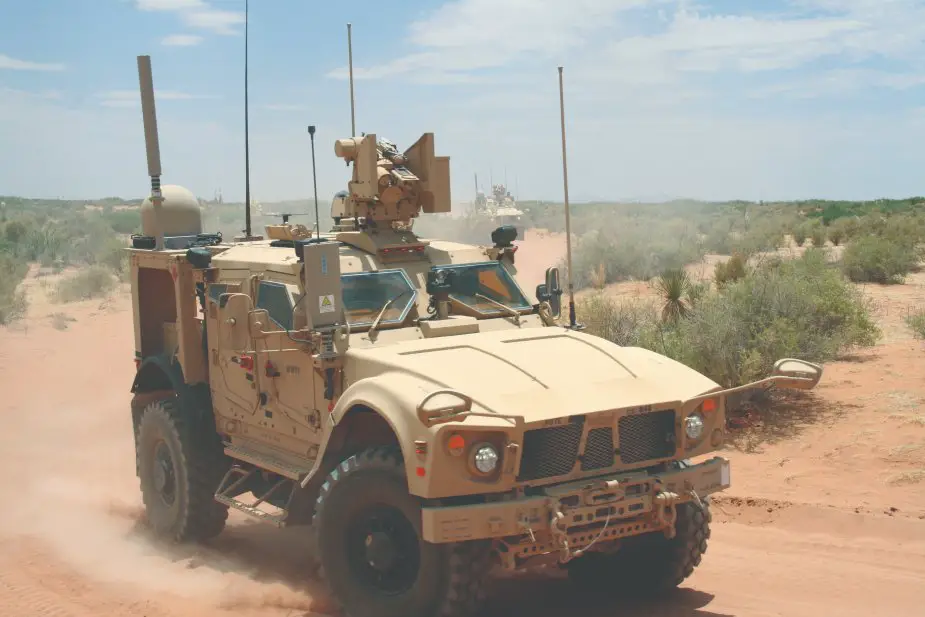Breaking news
US Army leveraging industry ideas to modernize network.
Modernization efforts for the U.S. Army network are moving forward with plans to get after cloud-based technology and to equip a signal unit with an experimental set of network equipment this fall, Sean Kimmons, Army News Service, reports.

"We're postured at a really unique and exciting time right now in network modernization," said Maj. Gen. David G. Bassett, director of Program Executive Office Command Control Communications-Tactical (Picture source: U.S. Army)
"We're postured at a really unique and exciting time right now in network modernization," said Maj. Gen. David G. Bassett, director of Program Executive Office Command Control Communications-Tactical.
Bandwidth on tactical networks still remains an issue to support upgraded cloud-based technology. That technology greatly improves how Soldiers perform distributed mission command on the battlefield. "If we're going to transform the Army network and we're going to leverage some of these cloud technologies, we have to provide more bandwidth," Bassett said July 2 during an event hosted by the Association of the U.S. Army.
The general, whose office works closely with the Army's Network Cross-Functional Team, one of several teams recently created to tackle modernization priorities, pointed out the huge gap in bandwidth compared to commercial standards. Bassett noted that a colleague's cellphone had about 70 megabytes per second of connection speed -- a powerful resource that fits in his and many other people's pockets. But for Soldiers at a recent combat training center rotation, they could only work on a secured network with two megabytes per second.
Bandwidth is a precious commodity the Army hopes to boost with additional satellite access points that can transmit voice, video and data with minimum delay. "We think there are some [communications satellite] constellations on the horizon that are going to allow us to do that and we're looking forward to leveraging them as they become available," he said. These will become vital as the Army works on its next integrated tactical network after it ended its Warfighter Information Network-Tactical program.
A signal unit, called the Army Communications Support Battalion, will also stand up this fall to begin experimentation that will help inform network design choices for expeditionary signal equipment. "Experimentation is not an end to itself, but rather experimentation is to inform design choices and then the programs that follow to deliver capability," Bassett said.
In the past, he noted, experimentation often lacked follow through. Industry partners would bring a new capability to a demonstration and it would end there. "We think the change now is that it ends in a different network design that we're going to then field to our Soldiers," he said.
There have also been ongoing developments with radio networks. Army officials recently awarded the first low-rate production of new manpack radios. They are on the verge of awarding another contract for a new two-channel leader radio, which will be similar to those used now by Special Operations Forces. "We've learned the lessons from that and we're prepared with programs to deliver world-class capabilities," Bassett said.
This week, the Network CFT and PEO C3T held its second technical forum with industry partners in Raleigh, North Carolina, to exchange ideas that could one day give Soldiers a tactical edge in communications.
More than 400 partners representing over 120 companies took part in Raleigh to discuss opportunities and challenges of delivering potential cloud computing capability to operational formations. As an outcome of the forum, the Army plans to release a call for industry whitepapers to inform market research and future network experimentation within the next week, said Paul Mehney, spokesman for PEO C3T.
The first technical forum was held in March at Aberdeen, Maryland, where nearly 600 people attended. That meeting resulted in over 200 whitepapers that detailed ideas from industry partners. A few of them were deemed as "very mature" ideas that were handed over to the Army's acquisition community to place into programs for possible use.
Many others were passed onto the Communications-Electronics Research, Development and Engineering Center to continue their development and alignment with future modernization efforts, said Col. Bradley Hilton, a senior advisor for the Network CFT.
The forums, and also development operations as part of experiments, allow end users who may have faced a problem with communications in combat to speak with engineers who can provide a solution. "We have these conversations, so we can have a shared understanding of what we're trying to achieve," Hilton said.
While the Network CFT looks to better define the "what" in regard to the Army network, the acquisition community, including PEO C3T, tackles "how" it can be delivered to soldiers. Both efforts, though, will lean on industry partners as potential future capabilities move ahead in the process. "The system is made up of a team of teams that has to work together with industry, government and contracting, so that we go from good idea to enduring capability for our Army," Bassett said.


























